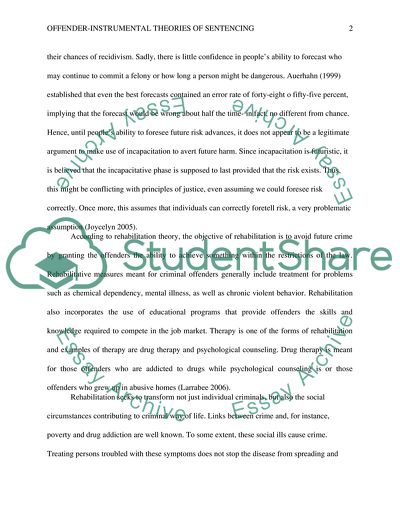Cite this document
(Offender-Instrumental Theories of Sentencing Essay, n.d.)
Offender-Instrumental Theories of Sentencing Essay. https://studentshare.org/law/1815667-offender-instrumental-theories-of-sentencing-are-never-an-adequate-justification-of-punishment-as-they-are-concerned-with-speculative-behavioral-tendencies-in-the-future-and-are-unrelated-to-past-moral-wrongs-discuss
Offender-Instrumental Theories of Sentencing Essay. https://studentshare.org/law/1815667-offender-instrumental-theories-of-sentencing-are-never-an-adequate-justification-of-punishment-as-they-are-concerned-with-speculative-behavioral-tendencies-in-the-future-and-are-unrelated-to-past-moral-wrongs-discuss
(Offender-Instrumental Theories of Sentencing Essay)
Offender-Instrumental Theories of Sentencing Essay. https://studentshare.org/law/1815667-offender-instrumental-theories-of-sentencing-are-never-an-adequate-justification-of-punishment-as-they-are-concerned-with-speculative-behavioral-tendencies-in-the-future-and-are-unrelated-to-past-moral-wrongs-discuss.
Offender-Instrumental Theories of Sentencing Essay. https://studentshare.org/law/1815667-offender-instrumental-theories-of-sentencing-are-never-an-adequate-justification-of-punishment-as-they-are-concerned-with-speculative-behavioral-tendencies-in-the-future-and-are-unrelated-to-past-moral-wrongs-discuss.
“Offender-Instrumental Theories of Sentencing Essay”. https://studentshare.org/law/1815667-offender-instrumental-theories-of-sentencing-are-never-an-adequate-justification-of-punishment-as-they-are-concerned-with-speculative-behavioral-tendencies-in-the-future-and-are-unrelated-to-past-moral-wrongs-discuss.


